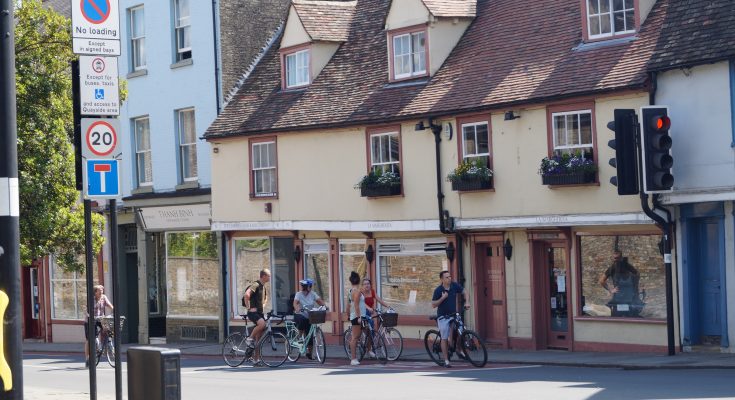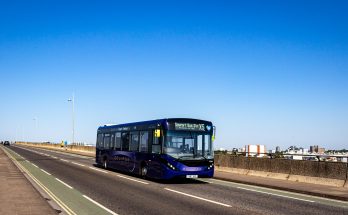The growing popularity of cycling has brought change in infrastructure all other England, becoming the main cause for improvement in our society.
Intending to create a greener and healthier London, the Mayor has planned to reach the headline target for 2041 for 80% of all journeys to be made by foot, cycling or public transport. The Cycling Action Plan, published in December 2018, laid the foundation for significant investment in new infrastructure to expand the cycle network in the capital.
Historically, routes have been delivered under Cycle Superhighways and Quietways brands, but these are now being are merged into a single network called Cycleways. On busier streets, segregation is often used, designed to make cycling safer by keeping cyclists away from general traffic. On residential streets, measures such as traffic calming and filtering are used to reduce levels of traffic.
As a result of the cycle infrastructure improvement on CS6 and CS3, the number of people counted cycling has increased from 124% to 200% between 2014 and 2017. TfL surveys found that 84% of CS3 users felt safe during their journey, showing how new routes address safety barriers.
TfL’s monitoring shows that the segregated cycle lanes at Blackfriars Bridge are able to move 5 times as many people as the adjacent carriageway lane. After only 2 weeks of the Cycle Superhighway routes opening, 5% more people were moving across the bridge.
On a sample of new routes, agreement with the proposition ‚ÄėThe quality of my journey has improved since the changes‚Äô is above 60% on all but 2 of the assessed routes.
Key figures
- 84% of CS3 users felt safe during their journey.
- 200% increase in people counted cycling over the same period
- after only two weeks of the Cycle Superhighway routes opening 5% more people were moving across the bridge.
The outer London boroughs are using the Mini Hollands scheme to change their cycle infrastructure to mimic their Dutch ideal. Their goal was to make the outer London boroughs more cycle friendly and much less car dependant alike in some Dutch cities, where more than 50% of journeys are taken by cycling. This would eventually help create a healthier town from both sides, the towns less polluted, and the people having better quality of life.
The scheme awarded £30 million the participating boroughs to improve the cycle infrastructure. In Enfield and Waltham Forest this was matched by an additional £15 million contributed to the programme from the boroughs own sources.
The changes that were advised included, segregated cycle lanes; measures to calm motor traffic; redesigned town centres; cycle hubs and a range of behaviour change measures including community bike rides. Also some addition measures were made, such as new pedestrian crossings at key locations, and the creation of new public spaces with seating, trees and flowerbeds.
As of June 2019, 46 of the 59 proposed infrastructure schemes were complete or under construction. All interventions are due to be complete by March 2021.
There is evidence of a positive impact on active travel behaviour. A study investigating the early impact of the program discovered that people in high-dose areas were 24% more likely to have done any cycling in the previous week, and walked or cycled for 41 minutes per week more than those where such improvements have not yet been made.
Key figures
- £15 million contributed to the programme from the boroughs own sources
- 24% more likely to have done any cycling in the previous week
- 59 proposed infrastructure schemes
The cycle infrastructure and the behaviour towards cycling also changed in Birmingham. The city wanted to switch to more active journeys and travel, to improve health, quality of life and the environment, and local economy.
Data from the National Travel Survey shows that 13% of journeys under one mile are by car, increasing to 51% for journeys under 2 miles, showing that there is massive potential for increasing walking and cycling for short trips.
The programme provided grants to fund cycling infrastructure in 8 cities, or groups of cities, in England, including Birmingham. Supported by the grants, Birmingham resurfaced 8 canal towpath cycle routes, created or improved over 15 miles of cycle routes across green space, signed 11 routes along quieter roads, implemented 20 mph zones across 16 square miles of roads, and distributed 7,000 bikes in disadvantaged communities.
Recently completed schemes include 4 miles of new segregated cycle track along 2 ‚ÄėA‚Äô road corridors, with new cycle parking due to be installed along these routes shortly to complement parking facilities already installed in the city centre.
There has been a comprehensive upgrade of 32 miles of canal towpaths; information totems were installed on a one mile route in the city centre, and access ramps were added at 8 locations.
As a result of the measures, cycling volume on the canal towpaths increased by 157%, whereas city-wide cycling volume increased by 32% between 2012 and 2017, suggesting the canal towpath improvements had a positive impact on cycling levels.
Key figures
- distributed 7,000 bikes in disadvantaged communities
- 4 miles of new segregated cycle track along 2 ‚ÄėA‚Äô road corridors
- cycling volume on the canal towpaths increased by 157%
Manchester has also changed its cycle infrastructure to make itself greener. The Cycling Cities Ambition fund was part of the Cycling and Walking Investment Strategy. Data from Transport for Greater Manchester indicates that more than 30% of journeys under half a mile in Greater Manchester are made by car which shows that there is a lot of room for improvement.
Manchester’s cycle lanes were built over a distance of 3 miles along the Wilmslow Road and Oxford Road corridor. The scheme is on both sides of the road, and is a mix of:
- full physical segregation from traffic (63%)
- light segregation (1%)
- on-road cycle lane not physically segregated (28%)
- shared-use path (8%)
The scheme features 26 cycle bypass lanes at bus stops. This was a critical feature of the design, as the corridor is also Greater Manchester’s busiest bus corridor. Greater Manchester is one of 8 cities, or groups of cities, that received funding through the £191 million Cycle City Ambition programme.
As a result of these measures, total southbound flow in the 11-week period in autumn 2017, one year after installation of the counters, was 38% higher than in the same period in autumn 2016.
A second post-intervention count in March 2018, shows there had been continued increase in cycle volumes in the section 2 to 2.5 miles from the city centre. Relative to the March 2015 baseline, the March 2018 count shows increases in cycle volumes 0-2 miles from the city centre of between 85% and 176% and increases in cycle volumes 2-2.5 miles from the city centre of between 104% and 128%.
In the calendar year 2018 more than 1 million journeys were counted on the route on Oxford Road, with up to 5,000 people passing this marker each day. This equates to 621,000 car journeys, and reduces up to 1.9 tonnes of nitrogen dioxide or 873.5 tonnes of carbon dioxide.
Key figures
- Oxford Road recorded 5,000 two-way cycle journeys on a single day for the first time
- cycleway surpasses 1 million journeys on the route on Oxford Road
- reductions of up to 1.9 tonnes of nitrogen dioxide or 873.5 tonnes of carbon dioxide
Seeing the positive impact of improved cycle infrastructure in England’s cities, the UK government has undertaken several measures to encourage people to make use of their already existing bicycles, taking into account that the large proportion of the population (42%) of who have access to a bike do not cycle. 37% of adults now agree that journeys completed under 2 miles in a car can easily be completed via bicycle.¬†
How they did it
- By growing from 2 weeks to 6 months of events offering free cycling activities.
- By focusing mainly on repairing bikes to road safety standards but also includes events such as social rides, route planning, cycle skills sessions and maintenance workshops, making a more well-rounded project.
- Through reaching more than 40,000 people with the Big Bike Revival in England, fixing bikes, teaching skills and leading bike rides.
- By engaging with 47% females, 47% of people identified as non-white ethnicity and 52% of beneficiaries lived in deprived areas as understood from the bottom 3 deciles of the Index Multiple Deprivation (IMD) scale.
- By engaging with more delivery centres allowing Cycling UK to engage specifically with 40,036 beneficiaries, 12,808 of which have an improved perception of cycling safety and creating 13,065 new utility cycling trips.
What was the impact?
During the 2018 scheme 1,077 free events were delivered across England. This resulted in 20,908 people reporting they exercised more now after the programme and 7,334 non-regular cyclists increasing their cycling activity.
The benefits of this scheme will be seen in the long-term improvements to health and reduction in premature deaths due to the increased activity. There is also a cost-saving from the increase in journeys completed carbon-free.
Key figures
- Big Bike Revival is consistent. In 2018 alone it engaged with 47% females
- 13,065 new utility cycling trips created
- 7,334 non-regular cyclists increasing their cycling activity
Image: A group of cyclists waiting at the traffic lights to cross Northampton Street in Cambridge, Cambridgeshire, UK © REET


